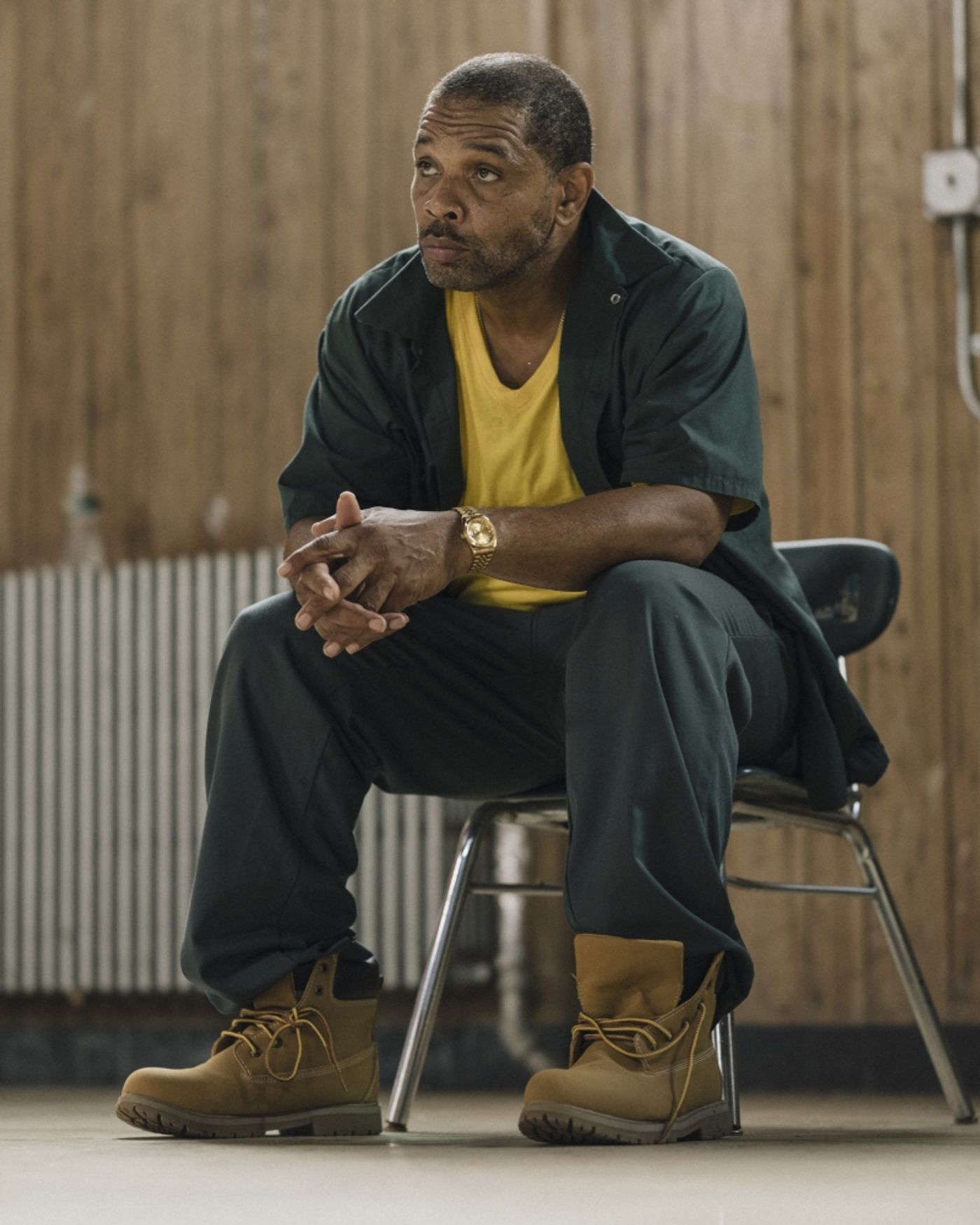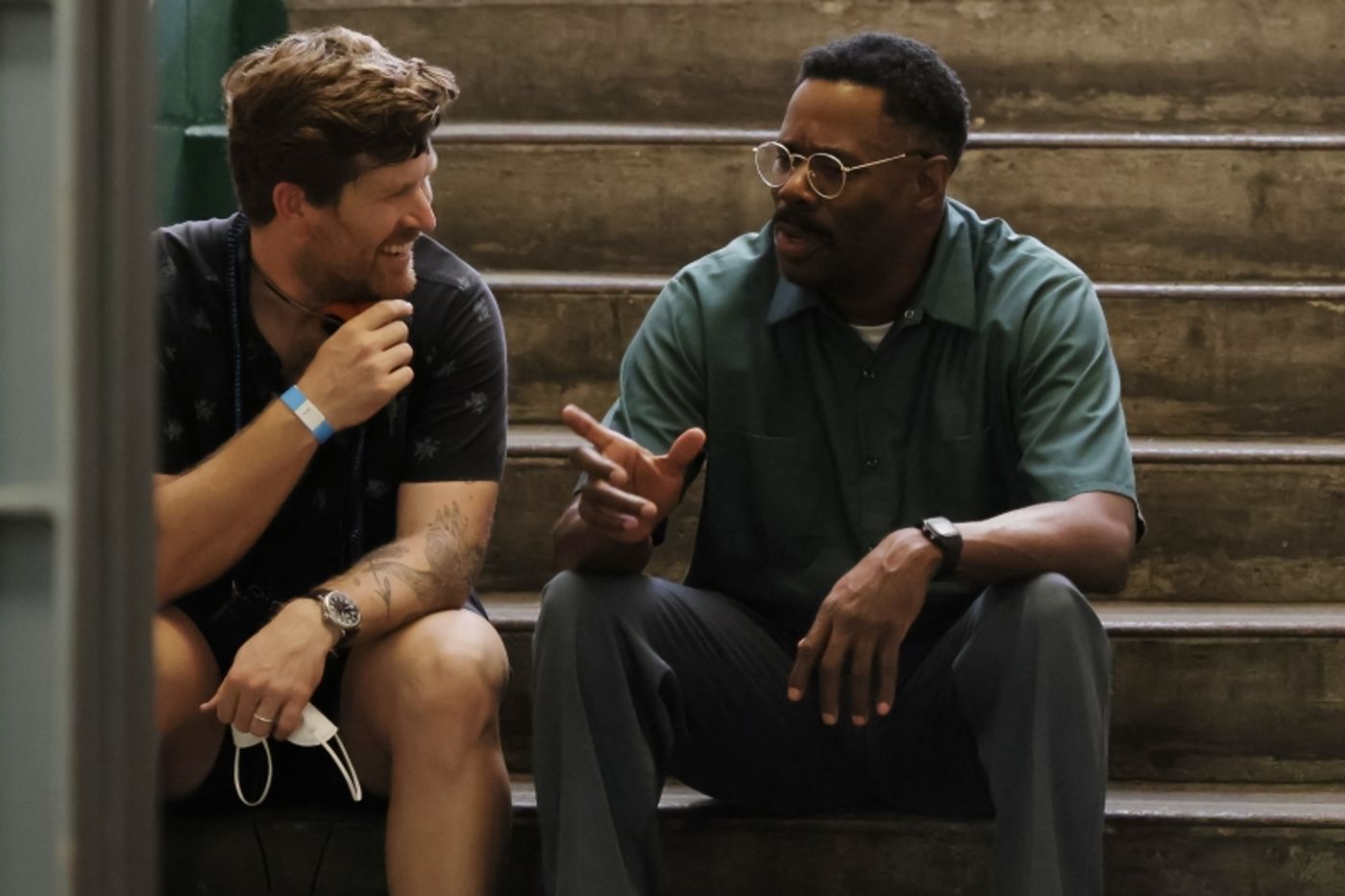Exclusive: SING SING Cast and Crew Talk the Transformative and Healing Power of Art
Sing Sing hits limited markets on August 16, before arriving in theaters nationwide on August 23.

In 2005, New York's Sing Sing Correctional Institute mounted an original musical in partnership with Rehabilitation Through the Arts (RTA), a program dedicated to bringing healing and encouragement to people who are incarcerated. Written and directed by facilitator Brett Buell, the play "Breakin' the Mummy's Code" featured a company made up of incarcerated people who regularly participated in putting on theatre productions at the facility.
One of those men, Clarence "Divine Eye" Maclin, is playing a fictionalized version of himself in a new A24 drama, appropriately titled Sing Sing. In the film, Maclin stars alongside award-winning actor Colman Domingo, Paul Raci, and a slew of other performers, many of whom were participants of the program. The story centers on the friendship between Maclin's "Divine Eye" and John "Divine G" Whitfield, played by Domingo.

BroadwayWorld sat down with Clarence Maclin along with writer/producer Clint Bentley and producer Monique Walton to discuss Sing Sing and the power of art, beauty, and healing that is on display in the film.
When approached to play a variation of himself onscreen, Maclin says he was not apprehensive about it at all. “I’m a ham, by nature," he said. "I love it.”
He got involved with the project through Buell himself, who also appears in Sing Sing, played by Paul Raci.
"Greg [Kwedar] and Clint [Bentley] got in contact with Brent Buell because of an Esquire magazine article that they had come across," the actor said. "Brent told them 'If you really want to hear the story, you should hear it from the men that lived it.' Brent set up a breakfast and they asked me if I would come just talk to these guys about this movie proposal that they had on the table. And he already knew that was a no-brainer for me."
Maclin recalled getting to know the writers during that first meeting: "We sat down and they sounded very genuine about this proposal. It didn't sound like they wanted to exploit us in any kind of way. At the meeting, we talked about everything besides the movie. We talked about how we see the world. We talked about all different things, and that's how the comradery was built."
Kwedar and Bentley had been working on the project for years before producer Monique Walton became involved. But, when she learned about the film, she was drawn to it immediately.
"When they told me about the friendship and the whole arc of the story, I thought that it felt, at its core, is a story about healing. That was something that really resonated with me [because] I could already start to see the glimmers of what the actual process of making the film could be like and if that could be a healing experience as well for all of us," Walton said.
Bentley also recalled the collective healing on display that he observed while working on the film, particularly for the former members of RTA. "I remember feeling when we left [that] if this movie never got done and never got distributed, it would still have been worth it for this experience that we all had."
Though the character was based on himself, much of the personality of the film's "Divine Eye" was taken from external sources. "I used elements of behaviors that I had witnessed while I was in prison and even things that I have seen. I use all those types of elements to build up that character and to incorporate elements of myself as well," Maclin explained.
Maclin noted the collaborative nature of working out the dialogue to ensure its believability and authenticity. "Early on, there may have been times when the language got a little confusing because it wasn't how we talked. No one who hasn't been inside prison would really understand that," he noted.
Bentley also recalled some early difficulties fine-tuning the script: "We'd had this profound experience with RTA and with the men who had been through the program and were out now. We would tell people about it and say, 'Just wait for the script!' And then we'd send it over and it just would fall flat."
Bentley and Kwedar eventually found that letting Domingo, Maclin, and Whitfield into the storytelling process helped to move the script to a place of authenticity.
"[We saw] ourselves no longer as translators of an experience, but using the skills that we had as screenwriters to be a vessel and have that story passed through, rather than us trying to put our own ideas and conceptions around it as much," Bentley explained.

After Domingo was on board as "Divine G", Maclin got to know his co-star on Zoom: "We were rehearsing during Covid. It just seemed like the camaraderie clicked straight off the top because of the genuineness. What started as just us planning to put in the work became a friendship because it bled off the script... It was a bond that was built through conversation and communication," he added.
Though the film features professional actors such as Domingo and Raci, the decision was made early on to include real-life members of RTA in the film, specifically those who had been in the original production of Breakin' the Mummy's Code. "There were a lot of actors that Greg and Clint had already formed relationships and friendships with throughout this six-year development process," Walton said. "I would call each of them...and try to succinctly talk about this kind of meta-narrative. I found that everyone was really open to the idea, but also just open on a spiritual level. Their vulnerability and ego had been shed years ago while they were in this program, and so they had this openness and ability to be fully present and really show up. It kind of challenged me to think, 'Oh, I have to show up with my full self just as they are,' which was a beautiful challenge to have."
Bentley hopes that the movie initiates conversations about the power of art as healing: "[Art] is very essential for us as people, whatever that is. I think we get so caught up in the feeling of, 'If you're not making a lot of money at acting or writing or whatever, then you shouldn't do it.' I hope people take away from this that the process of doing it can be healing and valuable regardless of the outcome."
Maclin agrees: "I want the world to know that art is precious to us. And it's the way that we are going to save the whole world. It is just not about this movie. It's about appreciating the power of transformation through art. To appreciate the power of building up communication so that we can communicate better through art. This is what we mean by being revolutionary and taking over the world."
Sing Sing hits limited markets on August 16, before arriving in theaters nationwide on August 23. Watch the trailer here:
Videos

